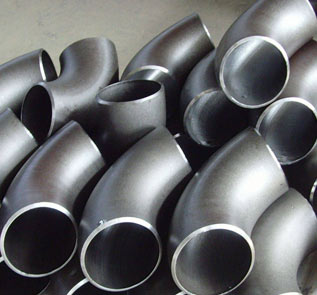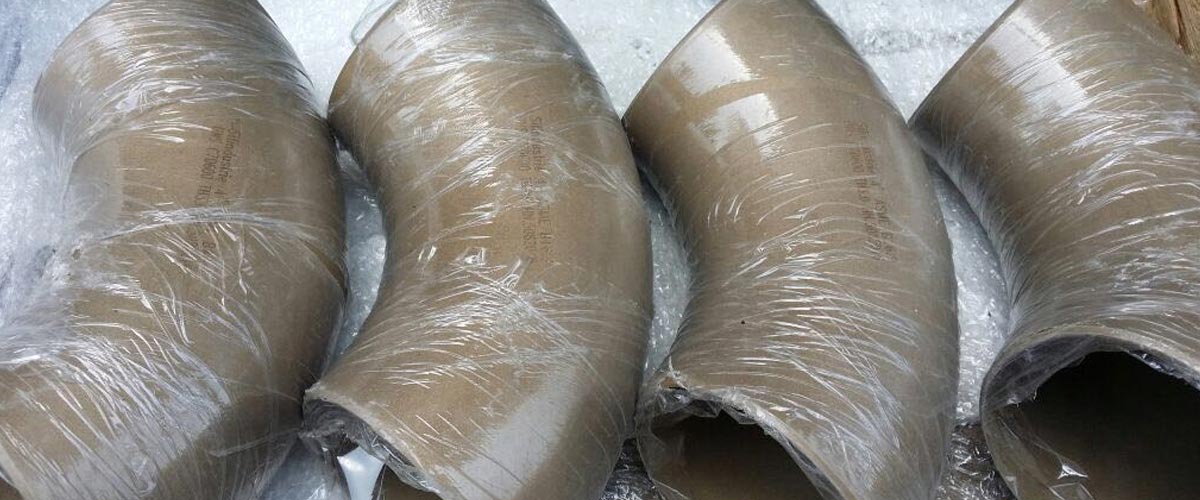What are Metal flanges and stainless steel flanges?
Flanges can be of different types depending on the type of material used to make them. Here we will discuss two types, which are metal flanges and stainless steel flanges.
Metal Flanges
- An A234 Wpb flange is a circular disk that is welded to the end of a tube and allows it to be screwed to another tube. Generally used in water and fuel pipes, the two flanges will be screwed with a joint between them. The Flange will have screw holes around the entire perimeter and will be used to create splices, T-joints, and joints.
- When building a pipeline, the length of the pipes that will be used is not always known. By manufacturing the pipes separately from the A420 WPL6 flanges, welders can cut the pipes to size and weld a flange to join the pipes according to the length needed. The flanges can also be welded to the tubes with a slight inclination to allow two tubes that are not precisely aligned to join.
- The design of the flanges is uniform in a given size, regardless of the materials used to create them. This allows a black 15 cm pipe flange to match a stainless steel A350 LF2 flange perfectly. The flanges have a serrated finish on inside of the coupling surface, which allows the Flange to sit on the joint material. This assurance a perfect close up amid the two pipes.

Stainless Steel Flanges
- Metal flanges are ordinary in numerous applications, but under certain situations, some types of metal flanges are superior to others. A flange joint can use different materials due to the properties they possess. Among the different types of flanges, stainless steel flanges are a relatively popular choice because of their properties. Some examples of flanges, such as carbon steel, are susceptible to corrosion, commonly called rust. Stainless Steel Blind Flange is very opposed to corrosion and, as a result, can last longer than a carbon steel flange.
- Although the stainless steel flange is only one of the available types of metal flanges, it is usually the most popular. The size of flanges, as well as types of metal used in its construction, vary according to their application. Stainless steel flanges are easily incorporated into almost any flange system.
- The main reason for choosing stainless steel ASME B16.9 flange over other types of metal flanges is corrosion resistance and strength. Some metals are softer than others. Aluminum is softer than stainless steel. Under a great deal of stress, the aluminum flange may deteriorate, while the stainless steel flange will not. That kind of reliability makes the stainless steel flange a common choice in industrial applications.
- Although stainless steel flanges can cost more than other types of metal flanges, the reliability it offers is worth the investment. This B16.5 Flange must be available in a variety of sizes for a wide variety of applications. Because institutions regulate most metal flanges, it should be easy to replace one type of Flange with a stainless steel one, if necessary.
Flange: types and work of carbon steel flange
The flange, also known as a plate because of its shape, is a piece whose function is to join one tube to another in pipe systems. In the same way, it is also used to connect two different tubular devices (tubes to valves, or tubes to equipment).There are many SS Pipe Fittings manufacturers in India. Types of flanges:

- Flanges welding neck flange: These flanges are famous by their long conical neck, their end is butt welded with the corresponding tube. The inner diameter of the tube is the same as that of the flange. This characteristic of wp11 fittings provides a practically constant section duct, with no possibility of producing turbulence in the gases or liquids that circulate through it. The long neck and the smooth transition of the thickness of the same, give this type of flanges. It is used for severe work, where high pressures act.
- Sliding flanges (slip-on): In this type of flanges, the tube penetrates the cube of the same without reaching the plane of the contact face, to which it is joined by means of internal and external weld seams. It can be considered as simpler than the neck flange, due to the lower precision of the tube length and greater ease of position. Its mechanical conditions to resistance and fatigue are generally good, but somewhat lower than neck flanges.
- Blind flanges: They are intended to close pipe ends, valves or container openings, subject to various working pressures. From the technical point of view, this type of Wphy 42 Fittings is the one that withstands the most severe working conditions. In the terminals, where the temperature is a work factor or acts variant or cyclic, it is advisable to make the closures by coupling flanges with neck and blinds.
- Threaded flanges: Although they have the characteristic of not carrying welding - which allows quick and easy assembly. It is used for special applications (for example, in pipes where there are high pressures and ambient temperature). It is not convenient to use them in ducts where there are considerable variations in temperature.
How carbon steel flanges work
Forged flanges are generally less carbon free than molten flanges. They are not easy to oxidize. They are smooth, the structure is relatively compact and the mechanical properties of the molten flange are superior. Improper forging processes can also result in large or uneven grains; hardening cracking and forging is higher than the casting flange.
In the carbon steel flanges, the forging flange has a certain operating principle, according to the production process. The production process and the use of the carbon steel flange have a certain operating principle. Its principle operating is to use the insulation performance of the carbon steel flange insulation gasket. Heavy duty carbon steel flange insulation, carbon steel flanges for both sides of the factory electrical insulation flange. Mary Iron and galvanized pipes are commonly used (canned) than steel, which is stronger than iron. Low carbon steel from Stainless Steel Flanges Manufacturers In India is used for processes, such as processing forged carbon steel flanges, welding and cutting, rivets, bolts, axle fabrication, such as low carbon steel flanges.
